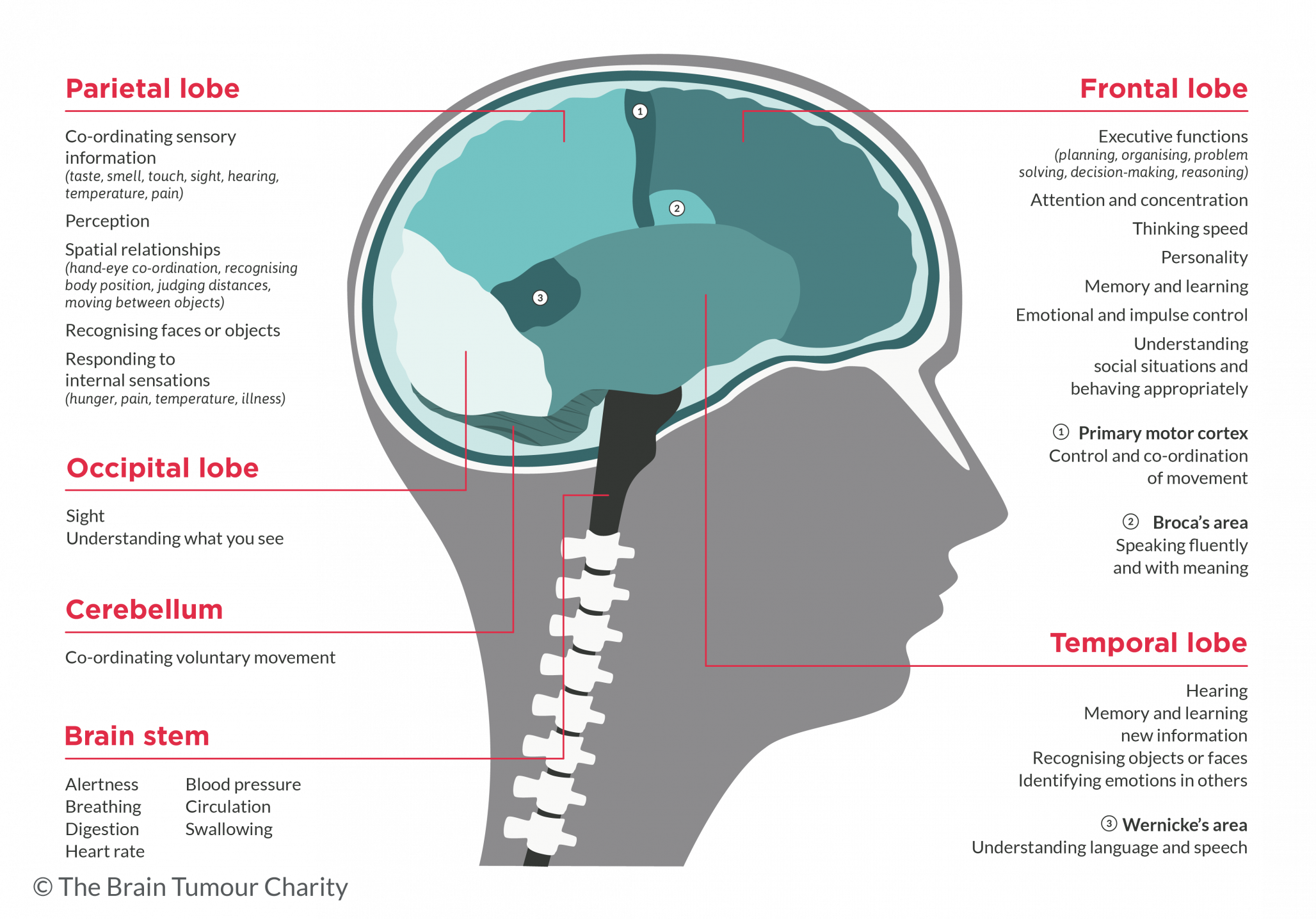Let’s get real for a sec—brain tumours are no joke. They’re scary, unpredictable, and can often go undetected until it’s too late. But what if something as simple as a routine eye test could save your life? Yep, you heard that right. Your eyes might hold clues about what’s going on inside your noggin. In this article, we’re diving deep into the connection between eye tests and brain tumours, so buckle up.
Now, before we jump into the nitty-gritty, let’s address the elephant in the room. Can a routine eye test really detect a brain tumour? The short answer is yes, but there’s more to it than meets the eye. We’ll break it all down for you, from how it works to what signs doctors look for. Stick around, because this info could be a game-changer.
Here’s the deal: early detection is key when it comes to brain tumours. Catching them early can make a world of difference in terms of treatment and outcomes. And guess what? Your eyes might just be the unexpected heroes in this story. So, let’s explore how a simple eye test could potentially save lives—and why you should never skip your annual check-up.
- Luxmovies New Website Your Ultimate Movie Streaming Destination
- Unveiling The Truth About Sierra Deaton A Rising Star In The Spotlight
Understanding the Link Between Eye Tests and Brain Tumours
Alright, let’s start with the basics. How exactly does an eye test relate to brain tumours? It’s all about the optic nerve, my friend. The optic nerve connects your eyes to your brain, and it plays a crucial role in vision. When something’s off in your brain—like a tumour—it can affect the optic nerve, causing changes that an eye doctor can spot during a routine exam.
What Happens During a Routine Eye Test?
When you go in for a routine eye test, your optometrist isn’t just checking if you need glasses. They’re also looking for signs of underlying health issues, including brain tumours. Here’s what typically happens:
- Visual Acuity Test: This measures how well you can see at different distances.
- Pupil Dilation: By dilating your pupils, the doctor gets a better view of the back of your eye, where the optic nerve is located.
- Ophthalmoscopy: This allows the doctor to examine the retina and optic nerve for any abnormalities.
These tests might seem simple, but they can reveal a lot about your overall health. If something looks off, your optometrist might refer you to a specialist for further evaluation.
- Unlocking The Power Of Agmaalrun Your Ultimate Guide
- Jack Doherty Height The Inside Scoop Youve Been Waiting For
Signs of a Brain Tumour That Can Be Detected in an Eye Test
So, what exactly are doctors looking for during an eye test that could indicate a brain tumour? There are a few key signs that might raise a red flag:
Papilloedema: Swelling of the Optic Disc
One of the most common indicators of a brain tumour is papilloedema, which is swelling of the optic disc. This happens when there’s increased pressure in the brain, often caused by a tumour. During an eye exam, your doctor can spot this swelling and recommend further testing.
Changes in Vision
Another red flag is any sudden or gradual changes in vision. This could include blurred vision, double vision, or loss of peripheral vision. While these symptoms could be caused by other conditions, they’re worth investigating, especially if they’re accompanied by other signs.
Other Abnormalities
Doctors might also look for other abnormalities, such as:
- Retinal haemorrhages (bleeding in the retina)
- Optic nerve atrophy (damage to the optic nerve)
- Changes in the appearance of the retina
Any of these findings could warrant further investigation to rule out a brain tumour or other serious conditions.
How Brain Tumours Affect Vision
Brain tumours can affect vision in a variety of ways, depending on their location and size. Here’s how:
Pressure on the Optic Nerve
As a tumour grows, it can put pressure on the optic nerve, leading to vision problems. This pressure can cause swelling, damage, or even loss of vision if left untreated.
Interrupting Visual Pathways
Brain tumours can also interrupt the pathways that carry visual information from the eyes to the brain. This can result in a range of vision issues, from blurry vision to complete loss of sight in one or both eyes.
Causing Other Symptoms
While vision problems are a common symptom of brain tumours, they’re not the only ones. Other symptoms might include headaches, nausea, seizures, or changes in behaviour. If you’re experiencing any of these symptoms, it’s important to seek medical attention right away.
Who Should Get Regular Eye Tests?
Now that we’ve established the importance of eye tests in detecting brain tumours, let’s talk about who should be getting them. The short answer is everyone. But there are certain groups that should be extra vigilant:
People with a Family History of Brain Tumours
If brain tumours run in your family, you’re at a higher risk. Regular eye tests can help catch any issues early, giving you a better chance at successful treatment.
Those with Existing Health Conditions
If you have conditions like diabetes or high blood pressure, you’re already at a higher risk for vision problems. Getting regular eye tests can help monitor your eye health and catch any potential issues before they become serious.
Anyone Over the Age of 40
As we age, our risk of developing certain health conditions increases. Regular eye tests are a great way to stay on top of your health and catch any potential problems early.
What Happens if a Brain Tumour is Detected?
Let’s say your eye test reveals signs of a brain tumour. What happens next? Here’s a breakdown:
Further Testing
Your doctor will likely order further tests to confirm the diagnosis. This might include an MRI or CT scan, which can provide detailed images of your brain and help pinpoint the location and size of the tumour.
Treatment Options
If a brain tumour is confirmed, your treatment options will depend on several factors, including the type, size, and location of the tumour. Possible treatments might include surgery, radiation therapy, or chemotherapy.
Monitoring and Follow-Up
Even if no tumour is found, your doctor might recommend regular follow-up appointments to monitor your eye health and overall well-being. This is especially important if you have risk factors for brain tumours or other serious conditions.
Can Eye Tests Replace Other Diagnostic Tools?
While eye tests can be a valuable tool in detecting brain tumours, they can’t replace other diagnostic methods entirely. MRIs and CT scans are still the gold standard when it comes to diagnosing brain tumours. However, eye tests can be a great first line of defence, especially for those who might not have access to more advanced diagnostic tools.
The Importance of Early Detection
Early detection is crucial when it comes to brain tumours. The earlier a tumour is caught, the better the chances of successful treatment. That’s why regular eye tests are so important—they can help catch potential issues before they become serious.
How to Prepare for Your Eye Test
Now that you know how important eye tests can be, here’s how to prepare for yours:
- Make sure to bring your current glasses or contact lenses, if you have them.
- Be prepared to discuss any changes in your vision or overall health.
- Don’t forget to mention any family history of brain tumours or other serious conditions.
By being open and honest with your optometrist, you’re giving them the best chance to catch any potential issues early.
Conclusion: Why Routine Eye Tests Matter
So, can a routine eye test detect a brain tumour? Absolutely. While it’s not a foolproof method, it can be a valuable tool in catching potential issues early. Regular eye tests are an important part of maintaining your overall health, and they could potentially save your life.
Here’s what we’ve learned:
- Eye tests can reveal signs of brain tumours, such as papilloedema and changes in vision.
- Certain groups, like those with a family history of brain tumours or existing health conditions, should be especially vigilant about getting regular eye tests.
- Early detection is key when it comes to brain tumours, and eye tests can play a crucial role in catching them early.
So, don’t skip your next eye test. It could be the difference between catching a serious issue early—or not catching it at all. And hey, if all you need is a new pair of glasses, that’s a win too, right?
Now it’s your turn. Did you learn something new today? Let us know in the comments, and don’t forget to share this article with your friends and family. Knowledge is power, and the more people know about the importance of eye tests, the better off we all are.
Table of Contents
- Understanding the Link Between Eye Tests and Brain Tumours
- Signs of a Brain Tumour That Can Be Detected in an Eye Test
- How Brain Tumours Affect Vision
- Who Should Get Regular Eye Tests?
- What Happens if a Brain Tumour is Detected?
- Can Eye Tests Replace Other Diagnostic Tools?
- How to Prepare for Your Eye Test
- Conclusion: Why Routine Eye Tests Matter



Detail Author:
- Name : Mallie Bergstrom
- Username : pfunk
- Email : nathaniel09@sawayn.com
- Birthdate : 1992-09-30
- Address : 83285 Mante Harbor Apt. 468 South Hilda, NH 36519
- Phone : 423.276.5725
- Company : Pfannerstill Inc
- Job : Real Estate Association Manager
- Bio : Alias est voluptatem excepturi et pariatur consequatur. Provident amet dolorum accusantium officiis voluptas qui beatae. Nisi laudantium soluta ut perspiciatis iste eius. Et impedit aliquam nostrum.
Socials
twitter:
- url : https://twitter.com/deanna_nikolaus
- username : deanna_nikolaus
- bio : Harum voluptatem aspernatur aliquam quo non. Numquam sed velit sit est aut quod.
- followers : 6716
- following : 2111
tiktok:
- url : https://tiktok.com/@dnikolaus
- username : dnikolaus
- bio : Magni rem non iure ducimus earum maiores.
- followers : 4057
- following : 909
instagram:
- url : https://instagram.com/deanna_nikolaus
- username : deanna_nikolaus
- bio : Ea aliquid quos deserunt itaque ut. Non est ipsam sed perspiciatis doloribus. Eos omnis qui omnis.
- followers : 3831
- following : 747
